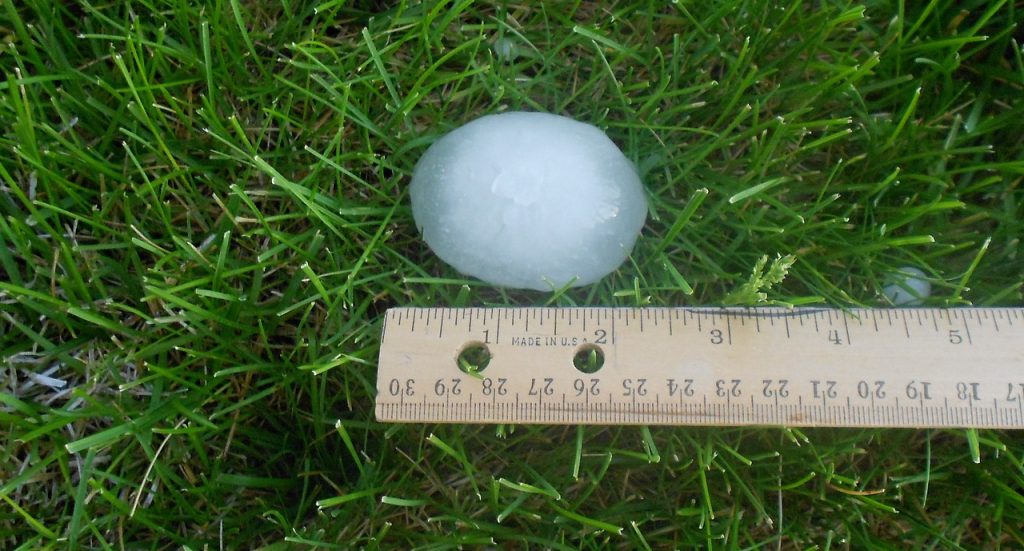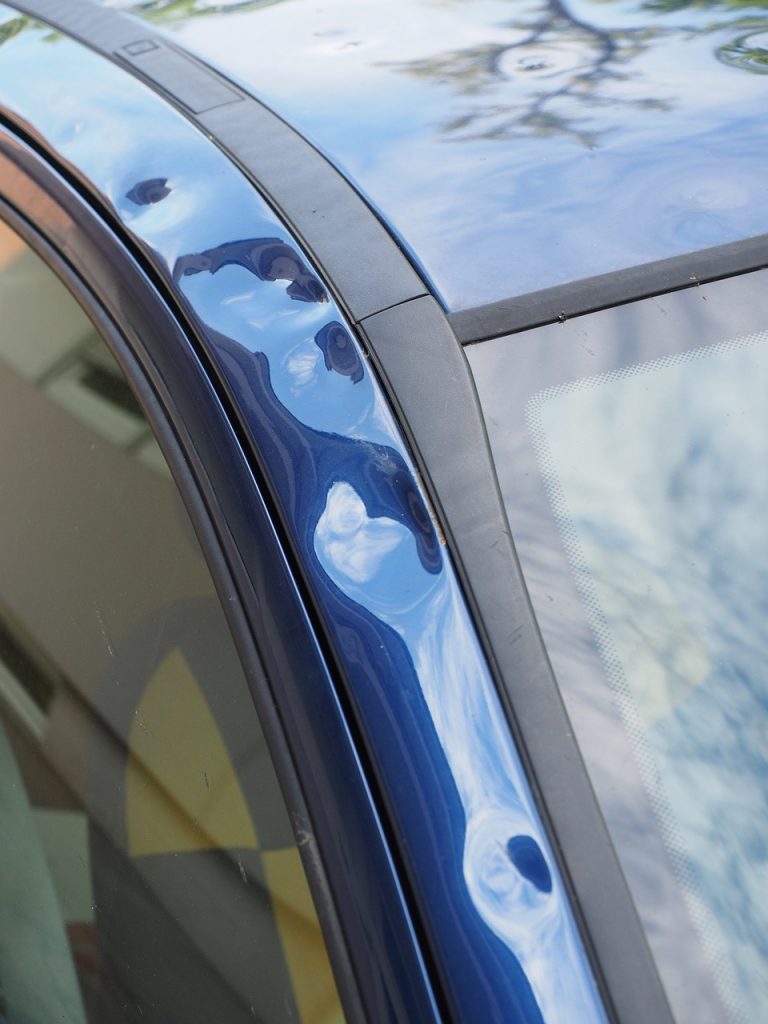The multiple storms up and down the east coast have resulted in many cases of cars being damaged by hail, including those in car yards. For example, the storm cell that hit the Victorian city of Bendigo has left around 700 storm-damaged cars in its wake.
Inevitably, many of these hail-damaged cars will appear on the used car market, and usually at heavily discounted prices.
But are they bargains or potential problems?
Most dealers with damaged stock will make a claim on their insurers who will assess the damage and make a payout. Whether or not a car is written off is a simple matter of economics. If the cost of repairing it exceeds the value of the car, it will be written off. Once the insurer has paid out on an insurance claim, it will want to recoup some of the money it has paid out by selling the written-off cars.
A car with slight hail damage, as long as you can live with the cosmetic shortcomings, can represent a significant saving over the prices of new or near-new cars. You may even wish to consider having the damage repaired.
But there are significant issues you should be aware of before making the decision.

Statutory write-offs and repairable write-offs
Most damaged vehicles offered for sale will be designated either a statutory write-off or a repairable write-off.
Statutory write-offs are cars that have been so severely damaged that they are unable to be safely repaired. As you would imagine, that makes them unregistrable. These cars are usually sold off for spare parts and scrap. If your own car needs parts, buying one of these can make good sense, but don’t imagine you can work your way around the rules and eventually get the car reregistered.
Repairable write-offs, as the name implies, can be registered, but only after they have been inspected to ensure they can be driven safely, without endangering the owner or other road users.
Prior to purchase, intending buyers can check government administered records to determine if the car they are thinking of buying has been written off. In any case, returning a statutory write-off to the road, even after apparently superficial hail damage, can often include multiple inspections and a blizzard of paperwork.

Repairing a hail-damaged car
Many of the cars that will be offered for sale have damage that is purely cosmetic. This will include damage to the paintwork, body panels or glass. Buying one of these cars has the potential to get you into a new or almost new car and save thousands of dollars compared to an undamaged car.
Sure, you’ll save on the initial purchase price, but having panel beating and repainting carried out, sourcing parts and replacing damaged glass could well eat up everything you saved on the purchase price and considerably more.
Before you commit, determine just how much repairs will cost. And don’t be tempted to cut corners because a second-rate repair job will cost you money in the long run.
Another consideration is that after a storm, panel beaters and repair shops will be inundated with work, so it could be some time before your car can be repaired.
There are essentially three ways to repair hail damage. You can replace whole panels, but if the car isn’t new or is painted in a metallic, pearlescent of premium paint, matching the paint may require a complete (and expensive) respray, including panels that weren’t damaged in the storm.
Panel beating is a highly skilled trade, but there are plenty of dodgy practitioners out there. Hammering out dents takes time and patience, so less-than-reputable repairers may decide it’s easier to ladle filler into the dents rather than beat them out first. It will look fine when you pick it up, but after time, all sorts of imperfections will arise, including cracks and crow’s-feet.
A third option is paintless dent removal, which involves using a variety of levers, blades and flippers, getting in behind the damaged panel and pressing out the damage without affecting the external surface. PDR specialists are like miracle workers, but since they charge by the dent, if the car is extensively damaged, it can be cheaper to revert to conventional panel beating.

Insuring your hail-damaged car
Whenever you insure a car, one of the questions you will be asked is, ‘Is there any pre-existing damage?’
If you answer truthfully (and it’s always the best policy!) then you will have to admit that your car is hail damaged. As a consequence, the insurance company may increase your premium, or in severe cases, refuse to cover you for anything other than third party insurance (which covers you against damage you may cause to other cars or property but does not insure your own car against damage).
If you are silly enough to not tell your insurer that your car has pre-existing damage, it could refuse to pay out if you were ever in an accident and had to make a claim.
The best advice here is the have a qualified mechanic inspect the car, and then discuss with your insurance company the best way to get it insured.

Other things to consider
You may think buying a hail damaged car that is still under the manufacturer’s new car warranty protects you against things you only discover later.
If you’re buying from a dealer, ask if the manufacturer’s warranty has had any conditions voided as a result of the storm damage.
Water damage can be difficult to detect, but water getting into a car will likely result in rust or wiring damage. The same applies if you are buying a hail-damaged car privately and it may be a little more difficult to get a clear (or honest) answer. Be extra vigilant; you don’t want to end up with someone else’s problem.
Hail damage can also cause more insidious issues. It can gradually eat away at the paint, or cause it to chip and flake. Left untreated for too long, hail damage can allow rust to form as water seeps under the paint.
Always check whether the car has been moved between states (something that is quite common, because in the state where the damage has occurred, there will be many damaged vehicles competing for buyers). Buyers in other states may not be aware that the car was damaged in a storm, and different states have different rules about ‘rebirthing’ (repairing and reregistering) a car. It is not beyond possibility that a car you bought from another state will not be able to be registered in your home state.
A car that has been declared a statutory write-off, or even a repairable write-off, can be difficult to sell at a later date. Buyers have a healthy scepticism about how well the repairs have been carried out, and the ‘written-off’ flag stays with the car for its lifetime. Be sure to keep records of the repair work, and receipts, as well as copies of all the paperwork you had to complete during the process.
Know your rights
Australian Consumer Law has specific guarantees as to how a product should perform and look. This includes that goods (including cars) supplied in trade and commerce (except when bought at auction) will be of acceptable quality, safe, durable, free from defects, acceptable in appearance and finish, and does what it would ordinarily be expected to do.
Government guidance advises that defective goods (including hail-damaged cars) can be sold if the consumer is alerted to the defects before the sale. In this case, the supplier is excused from liability where the problem with the goods was specifically drawn to the buyer’s attention in a written notice. When a consumer is alerted to the defects, he/she will not have the right to a remedy if those defects later cause problems (such as rust, paint deterioration, electrical issues, etc.) The buyer should be alerted to the defects, even if hail damage repair work has been carried out. If a dealer fails to disclose the damage at the point of sale, a vehicle may be later found to be of unacceptable quality, especially if the damage is not evident or cannot be discovered through a reasonable examination of the vehicle before purchase.
To protect themselves, many dealers will ask you to sign or initial the written statement of defects.
Make a considered decision
Yes, the savings applied to the sale of a new or near-new hail-damaged car can be very tempting.
If the damage is minor and you can live with it, your decision should be quite straightforward. About the only real concern will be resale value when you come to sell.
But if the damage is more severe, or you intend to repair it, you need to look into all the variables such as the cost of repairs and the difficulties with insurance.
Have you had a vehicle damaged by hail? Were there issues when you tried to sell it? Share your experience in the comments section below.
Also read: It’s summer – time to review those car air-conditioning myths
This article originally appeared on seniordriveraus.com and is republished with permission.
Paul Murrell is a motoring writer and creator of seniordriveraus.com, which specialises in “car advice for people whose age and IQ are both over 50”.

